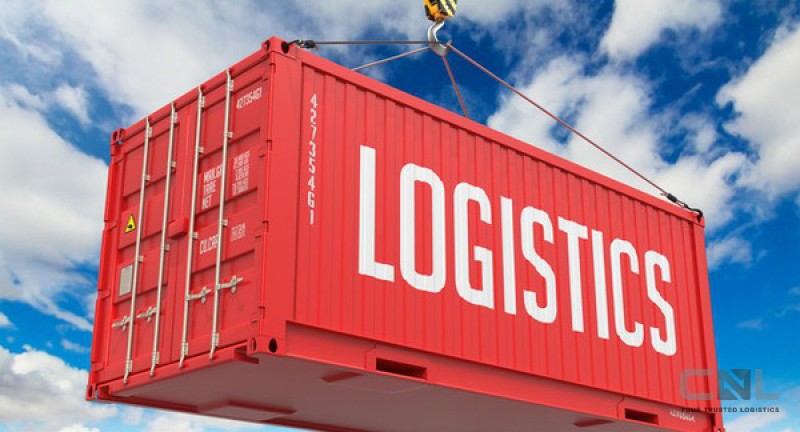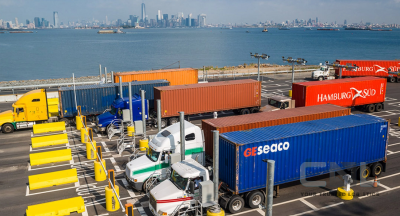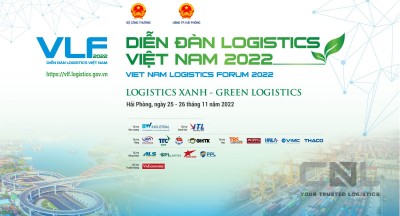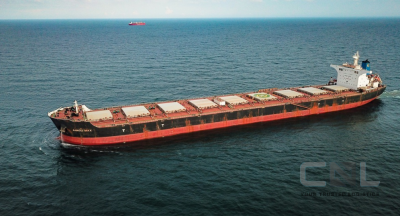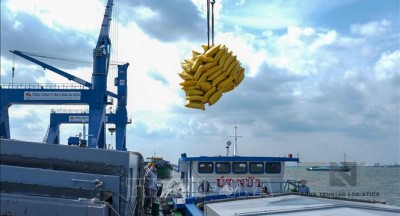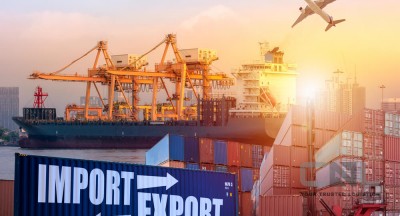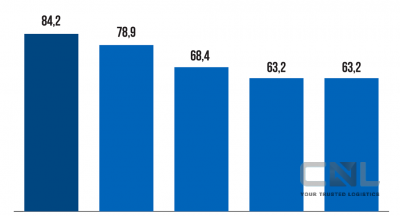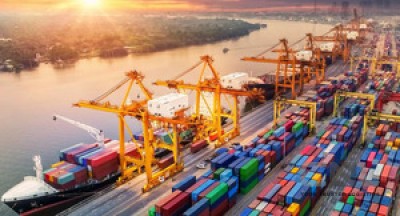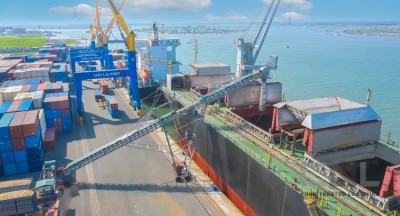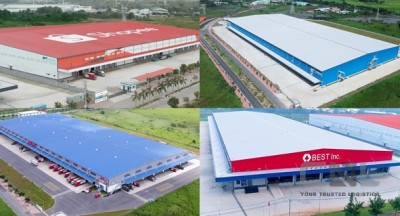In particular, the Government of Vietnam has identified logistics as an important service sector in the overall structure of the national economy, playing a role in supporting, connecting and promoting the socio-economic development of the whole country as well as each locality, contributing to improving the competitiveness of the economy.
Deputy Minister of Industry and Trade Nguyen Sinh Nhat Tan emphasized this at the seminar on improving the competitiveness of logistics service providers organized by the Import and Export Department (Ministry of Industry and Trade) in collaboration with Industry and Trade Newspaper on the morning of 28/4 in Hanoi.

- Important service industry
According to Deputy Minister Nguyen Sinh Nhat Tan, Vietnam has signed many free trade agreements (FTAs); in which, there are new-generation FTAs such as the Comprehensive and Progressive Agreement for Trans-Pacific Partnership (CPTPP), the Free Trade Agreement between Vietnam and the European Union (EVFTA), the Regional Comprehensive Economic Partnership Agreement (RCEP) with very high commitments of the parties in all fields, including traditional and non-traditional, the scope does not stop at commitments to open commodity markets but also in the field of services, investment, intellectual property.
Statistics show that Vietnam's international trade activities have developed strongly, helping to increase import and export turnover, expand markets, and diversify types of goods participating in import and export. Total import and export turnover of goods from 2010 to now increased 4.25 times, from 157.1 billion USD in 2010 to 668.5 billion USD in 2021.
Notably, despite facing many difficulties due to the 4th outbreak of the COVID-19 epidemic, the country's import and export in 2021 still reached a record number with a total turnover of 668.55 billion USD.
Among them, exports reached more than 336.3 billion USD, up 19% compared to 2020; imports reached 332.2 billion USD, up 26.5%; trade surplus of more than 4 billion USD. With this result, Vietnam has entered the top 20 economies in terms of international trade.
To achieve this positive result, it is impossible not to mention the contribution of the logistics service industry, despite many difficulties, Vietnamese logistics enterprises have adapted and basically maintained the supply chain...
However, Deputy Minister Nguyen Sinh Nhat Tan also pointed out the limitations that the logistics industry needs to overcome such as the fact that logistics enterprises have not yet developed to match the potential of the industry.
According to the Vietnam Logistics Business Association, currently 90% of logistics enterprises operating are Vietnamese enterprises but only account for about 30% of the market share, the rest belong to foreign enterprises.
Although the number is large, it is mainly small enterprises, the scale is limited in both capital and human resources as well as international operating experience, there is no link between the stages in the logistics supply chain and between logistics service enterprises and import and export enterprises. Therefore, in both buying and selling directions, domestic logistics enterprises are limited in terms of playing field.
"Therefore, although the topic of the seminar is not new, it is a key factor, a prerequisite issue to be solved if the logistics industry can develop breakthroughly, reaching a position worthy of the development potential of the industry, especially in the context of the economy adapting, overcome difficulties, recover strongly after COVID-19", the Deputy Minister affirmed.
Sharing the difficulties and problems of logistics enterprises, Mr. Truong Tan Loc – Marketing Director, Saigon Newport Corporation said that fuel prices increased dramatically in 2022 with an increase of about 33% compared to the average price in 2021, affecting the cost of enterprises.
In addition, relevant agencies have not created favorable conditions such as controlling goods transiting through border gates, causing difficulties for shipping lines, customers ...
The COVID-19 epidemic is still complicated, causing logistics activities to have preparation and backup plans for vehicles and human resources; Small and medium-sized businesses are unlikely to incur additional large costs.
According to Ms. Pham Thi Lan Huong - General Director, Vinafco Joint Stock Company, Vietnam's logistics market has many potentials but is very dispersed. For example, the number of small and medium enterprises accounts for the majority and up to 90% of registered enterprises have capital of less than VND 10 billion; dispersed in terms of type of service, logistics enterprises operate in many different service areas.
Currently, the number of enterprises providing integrated logistics services (3PL, 4PL) in Vietnam is limited. Along with that, the proportion of 3PL and 4PL enterprises only accounts for 16% of the total number of enterprises in the logistics industry. However, this piece of cake is mainly in the hands of foreign businesses.
With the goal of pioneering the application of technology and digital platforms in e-commerce logistics to optimize benefits for consumers and sellers, Ms. Ngo Thi Truc Anh – Director of Lazada Logistics Vietnam said that creating a sustainable logistics ecosystem is the most effective competitiveness.
Vietnam's e-commerce market has recorded impressive growth in the past 2 years, creating a breakthrough momentum for the logistics industry. However, logistics businesses are facing great challenges in operating processes to meet the increasing demands of the market.
- Keep pace with the market
2022 is forecasted to be a year with intertwined opportunities, advantages and difficulties, but Vietnam has strong geoeconomics that are very favorable to promote production, exports and logistics services due to its location in the dynamic development region of the world, where the flow of goods is very strong.
Therefore, both import and export and logistics of Vietnam are converging favorable conditions to continue to break through, grow faster and more sustainably in the coming time.
Truong Tan Loc said that in April 2022 of the World Bank (WB), Vietnam's gross domestic product (GDP) will reach 5.3% in 2022 and then stabilize around 6.5% in 2023.
Moreover, FTAs are gradually implemented more effectively, causing the Vietnamese market to grow strongly, especially for electronics, machinery and equipment, furniture, plastics, textiles and seafood. This is an opportunity to develop port and logistics services to serve the needs of connecting goods with major markets around the world.
In order to catch up with the market trend, achieve the goal of developing the logistics industry, Ms. Pham Thi Lan Huong said that it is necessary to develop more 3PL and 4PL enterprises as a spearhead to pull up the logistics market. At the same time, invest in, develop planning, have transport connector centers; there is a preferential mechanism for painting units; enterprises expect to have a program on technology solutions for the logistics industry; strengthen the linkages between businesses in the industry in a healthy way.
Ms. Le Thi Ngoc Diep proposed that it is necessary to promote the application of technology in the logistics industry to improve efficiency, optimize operational productivity and save operating costs for businesses. At the same time, close connection between logistics development and operation units to improve operational efficiency such as production, logistics and transportation units; encourage investment in Vietnam's logistics market...
Within the framework of the workshop, the Import and Export Department also published the Vietnam Import and Export Report 2021 after 6 consecutive years of compilation and publication by the Ministry of Industry and Trade.
According to the Vietnam Import and Export Report in 2021, the country's export turnover reached 336,310 billion USD, up 19.0% compared to 2020; in which, 10 provinces lead the country in export turnover including Ho Chi Minh City, Bac Ninh, Binh Duong, Thai Nguyen, Hai Phong, Dong Nai, Bac Giang, Hanoi, Hai Duong, Phu Tho.
Prominent among these, despite ranking in 10th place, up 3 places compared to 2020 in the ranking of leading localities, Phu Tho is the locality with the highest proportion reaching 91.5% compared to 2020 with a value of 8.2 billion USD.
Meanwhile, although it is still the leading locality in the country with 44.902 billion USD, Ho Chi Minh City only achieved an increase of 1.2% compared to 2020. Particularly, Hanoi ranked 8th, down 1 place compared to 2020, behind Bac Giang of the whole country, reaching 15.5 billion USD but only up 2.2% compared to 2020.
In addition, the 10 provinces with the lowest proportion of import and export in the country (from top to bottom) are Tuyen Quang, Ha Giang, Cao Bang, Dac Nong, Ninh Thuan, Bac Kan, Son La, Lai Chau, Dien Bien; in which, Dien Bien has the lowest export proportion of the country at only 15,702 million USD, negative growth up to 60.3%, down 3 places compared to 2020.
Notably, in the provinces at the bottom of the "ranking", Bac Kan only reached 41,248 million USD but had a growth rate of 276.6% compared to 2020, up 3 places according to the ranking.
Although the group of provinces such as Son La and Lai Chau still has an increased growth rate compared to 2020, the statistical ranking of export turnover still "remains" in the 61st and 62nd positions compared to the whole country.
Vietnam Import and Export Report is the official document of the Ministry of Industry and Trade on the import and export situation of each commodity group, market, the situation of taking advantage of opportunities from FTAs and managing import and export activities, analysis and forecasts for the next period.
Uyen Huong (VNA) -baotintuc.vn
